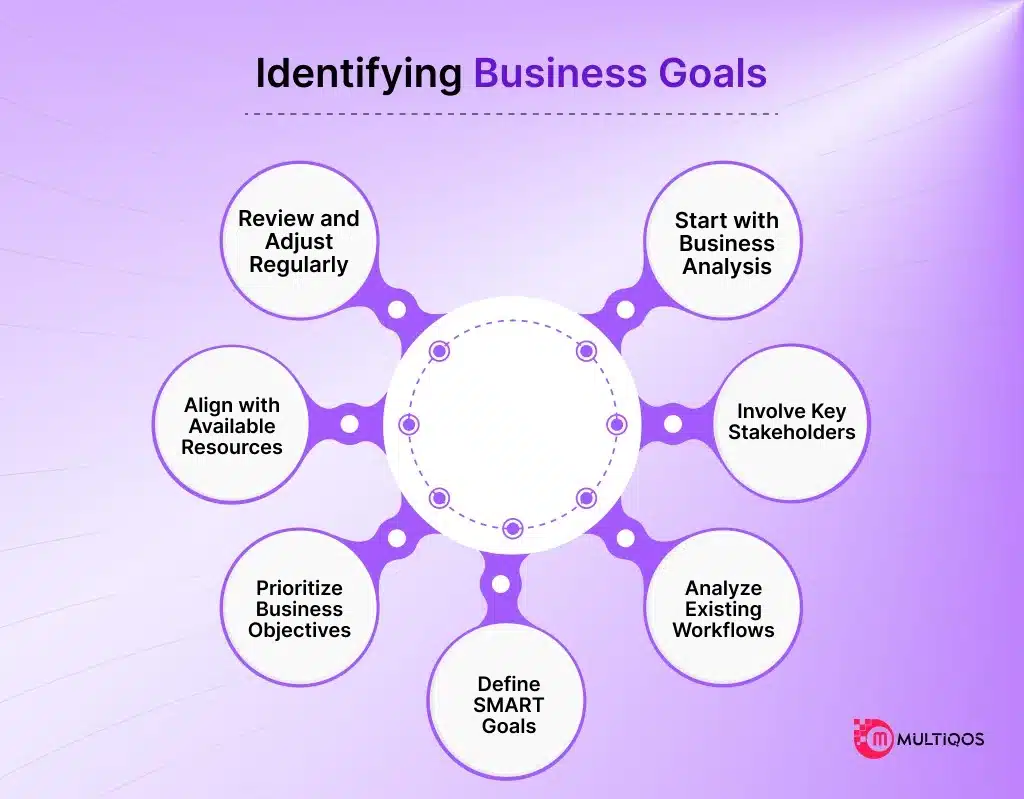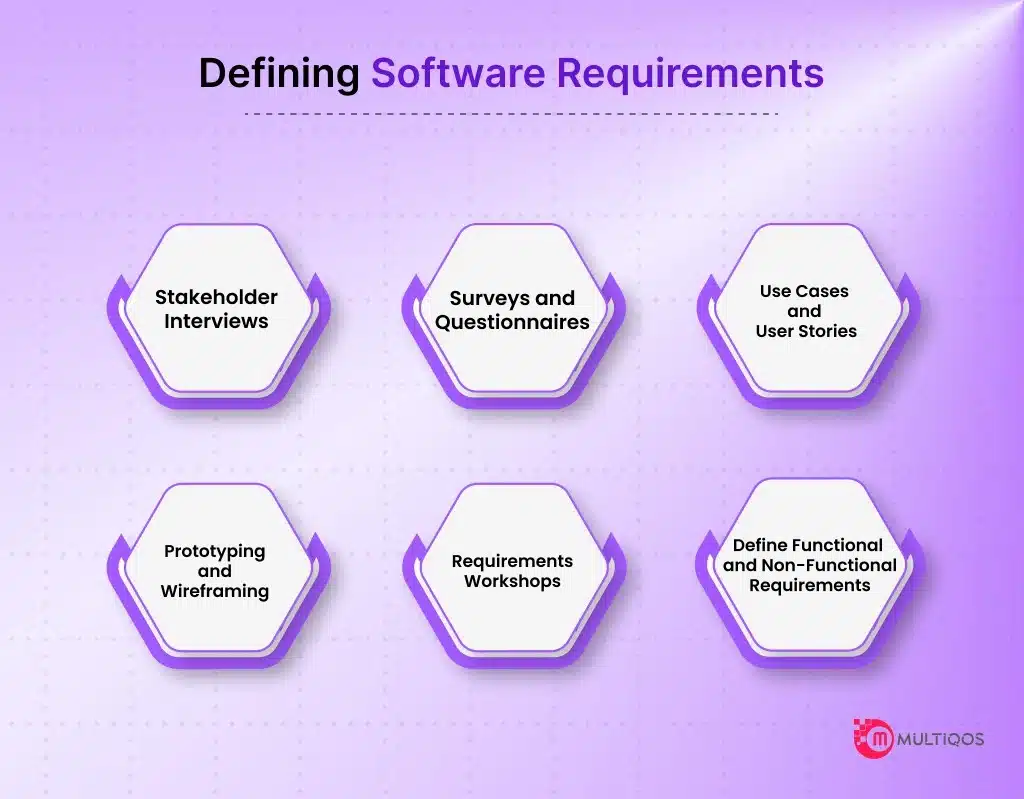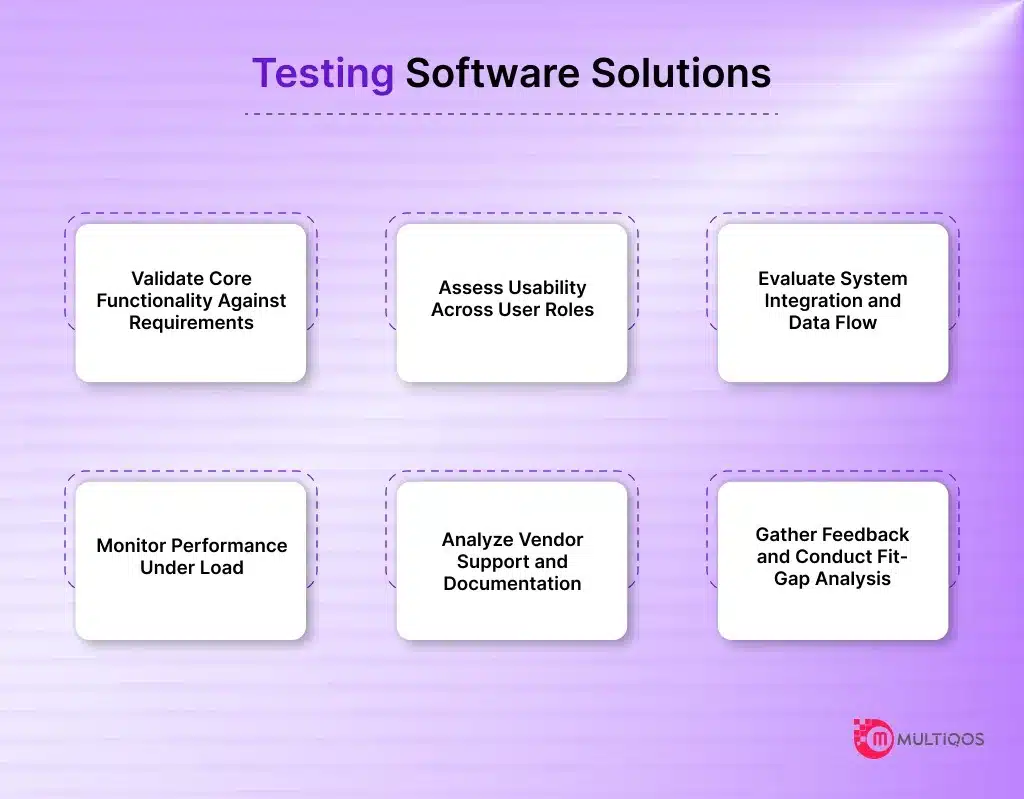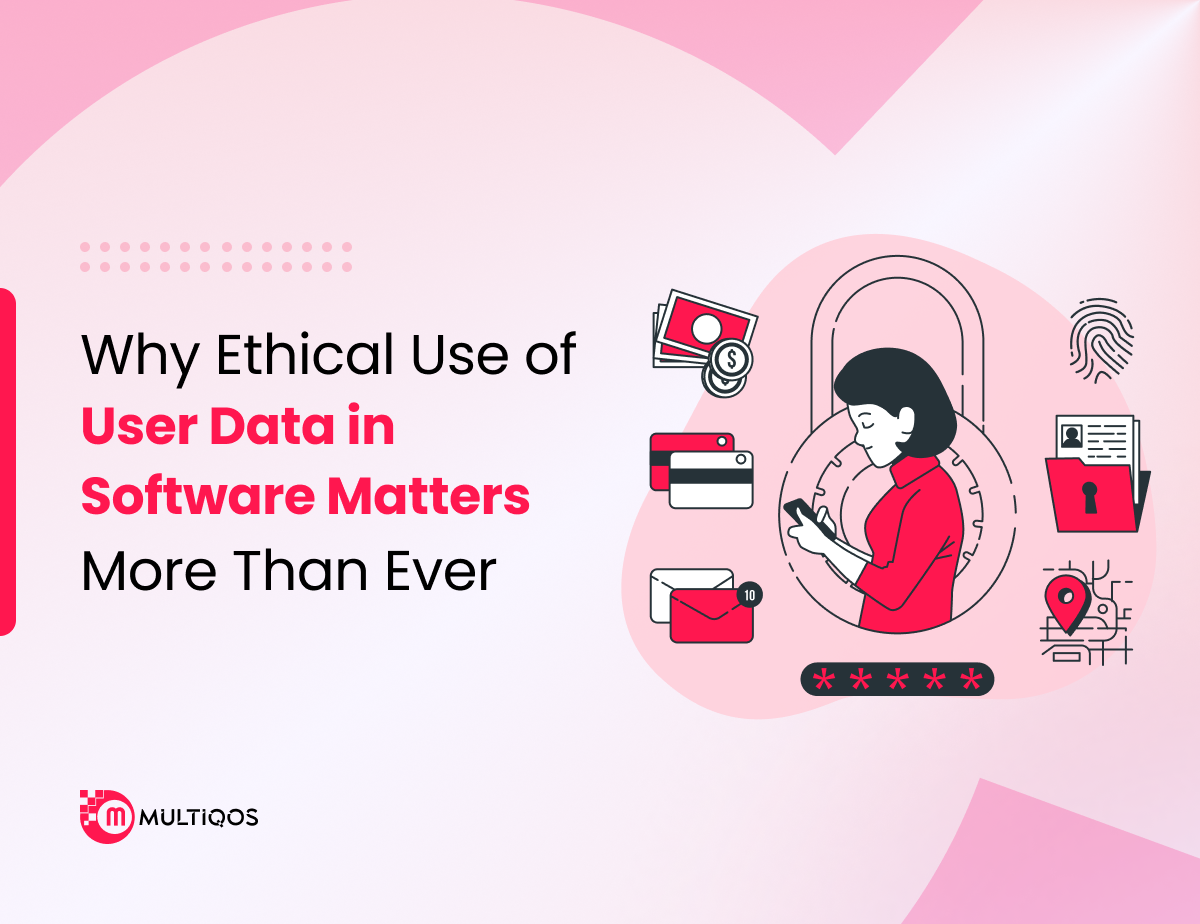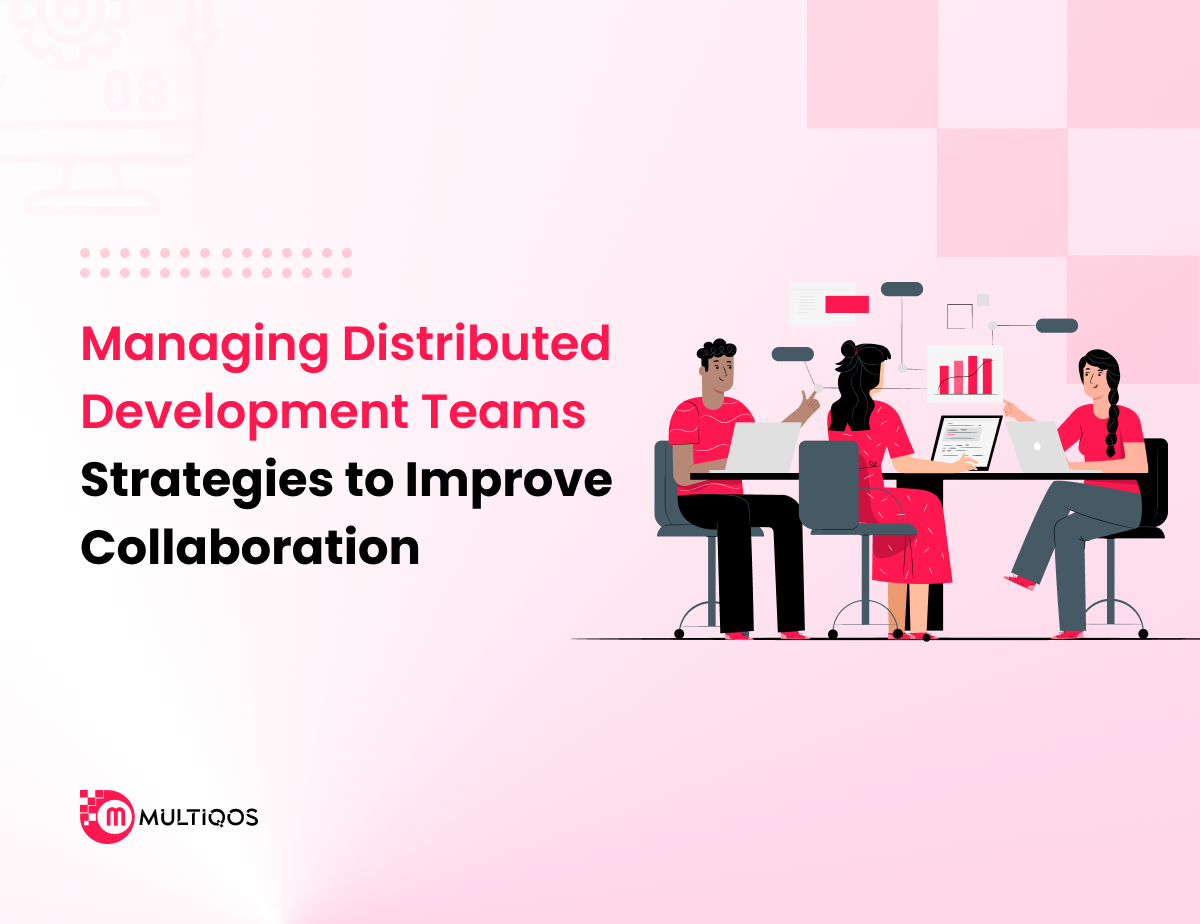Evaluating the Need for Software Development for Your Business
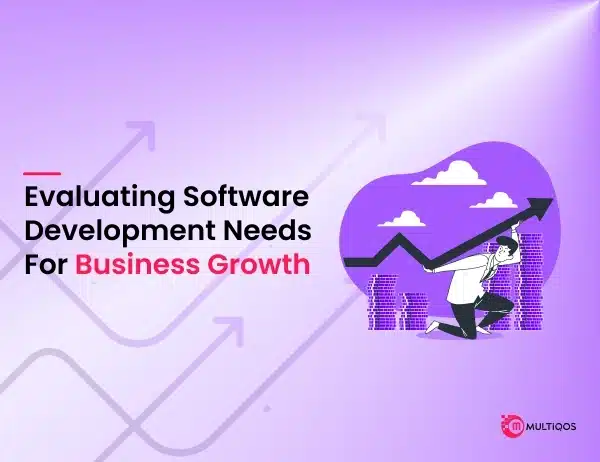
Summary:
Evaluating software development needs for business is a critical step in ensuring your technology investments lead to real, measurable growth. With countless tools and platforms available, it’s essential to identify what your business truly requires before making a decision. This guide walks you through the complete process of evaluating software development needs for business—from setting strategic goals and analyzing existing processes to researching solutions, testing options, and calculating ROI. Whether you’re building a custom platform or selecting off-the-shelf software, this blog equips you with the insights to make confident, value-driven decisions.
Introduction
In today’s competitive and tech-driven landscape, businesses must make smart, strategic choices when it comes to technology. One of the most important steps in this journey is evaluating software development needs for business—a process that ensures your software solutions are aligned with long-term goals, operational demands, and customer expectations.
Software development has become a key driver of innovation, enabling organizations to streamline workflows, reduce manual effort, and unlock new growth opportunities. According to Harvard Business Review, 72% of companies report increased profitability through technology investments, highlighting the critical role software plays in business performance.
In this blog, we’ll walk you through how to effectively evaluate your software development needs, compare available solutions, and align technology with your business vision. Whether you’re upgrading legacy systems or exploring custom development, this guide will help you make informed decisions that support sustainable success in the digital age.
Identifying Business Goals
The first step in evaluating software development needs for business is defining your goals with clarity and strategy. This ensures the software you choose or build aligns with long-term objectives and supports true business process improvement through software. Here’s a balanced, step-by-step approach:
1. Start with Business Analysis
Begin with a structured business analysis in software development to assess your current state, pain points, and long-term vision. This helps you identify gaps in your operations and sets the foundation for targeted software planning that aligns with your business strategy.
2. Involve Key Stakeholders
Collaborate with team members across departments—IT, sales, finance, and operations. Their input provides a full picture of needs and challenges, making your software development needs assessment more comprehensive and aligned with company-wide goals.
3. Analyze Existing Workflows
Review internal workflows and systems to detect inefficiencies or manual processes. This forms a critical part of assessing business software needs, highlighting where digital tools or automation can deliver the most value to your organization.
4. Define SMART Goals
Use the SMART framework—Specific, Measurable, Achievable, Relevant, and Time-bound—to define actionable outcomes. These well-defined objectives guide your software development requirements analysis and make tracking progress easier post-implementation.
5. Prioritize Business Objectives
Once you’ve outlined your goals, prioritize them based on impact, urgency, and feasibility. This helps focus your efforts on the most critical outcomes and supports identifying software solutions for business growth more effectively.
6. Align with Available Resources
Balance your goals with current resources, such as budget, technical skills, and development timelines. This ensures that your custom software development assessment remains realistic and results-driven from the outset.
7. Review and Adjust Regularly
Set periodic check-ins to reassess goals and realign your efforts. Business needs change, and continuous goal review supports strategic software planning for businesses that remains agile and growth-focused.
Assessing Current Processes
After defining your goals, the next technical step in evaluating software development needs for business is performing a detailed analysis of your current processes. This phase plays a crucial role in software development requirements analysis, allowing you to identify operational inefficiencies, integration issues, and functionality gaps that software can resolve or enhance.
1. Audit Manual Workflows and Redundancies
Start by documenting workflows that involve excessive manual intervention, such as repetitive data entry, reporting, scheduling, or multi-step approvals. These are strong candidates for automation, which is a key pillar of business process improvement through software. Use tools like BPMN (Business Process Model and Notation) to visualize and standardize these workflows.
2. Analyze System Integration Points
Map out how your current software ecosystem interacts across departments. Are your CRM, ERP, and financial systems connected? Evaluate the need for middleware or APIs to enable seamless data flow. Identifying integration gaps is central to assessing business software needs and ensuring interoperability in future software solutions.
3. Identify Bottlenecks Using Metrics
Leverage KPIs and process analytics to quantify inefficiencies, such as processing time, error frequency, or throughput delays. These metrics not only help prioritize development needs but also form part of your measurable goals in a structured software development requirements analysis.
4. Document End-to-End Workflows
Use tools like flowcharts, sequence diagrams, or swimlane diagrams to map the entire lifecycle of key processes—such as order fulfillment or client onboarding. A detailed view aids in identifying non-value-adding steps and informs the architecture of your custom solution, making strategic software planning for businesses more precise.
5. Conduct Technical Interviews with Teams
Interview technical and operational staff to uncover workarounds, shadow systems, or legacy software limitations. These insights often reveal hidden technical debt and are essential for accurate custom software development assessment and requirement scoping.
6. Define System Constraints and Dependencies
Catalog current platform limitations, such as database performance, scalability ceilings, or user concurrency issues. Defining these constraints early supports better evaluation of software development options and informs your architecture decisions, especially if planning a cloud-based or microservices-based solution.
Defining Software Requirements
Once your business goals and process inefficiencies are well understood, the next step in evaluating software development needs for business is to clearly define what your ideal software solution must deliver. This stage—often called the software development requirements analysis—acts as the blueprint for your future system. The more thorough your approach, the more successful the final product will be. Here are key software requirements and gathering techniques to build a complete and actionable requirements specification:
1. Stakeholder Interviews
Engage key users, decision-makers, and technical staff through structured interviews. Ask targeted questions around workflow challenges, feature expectations, and integration needs. This technique helps surface functional and non-functional requirements early in the custom software development assessment process.
2. Surveys and Questionnaires
Distribute structured forms to gather broader feedback from employees, customers, or partners. This method allows you to identify recurring issues or feature requests at scale—especially helpful when assessing business software needs across larger or distributed teams.
3. Use Cases and User Stories
Define how users will interact with the system using real-world scenarios. Use cases help outline system behavior under specific conditions, while user stories (e.g., “As a sales rep, I want to generate client quotes in under 2 minutes”) help clarify functionality from the user’s perspective. These formats are central to Agile-based strategic software planning for businesses.
4. Prototyping and Wireframing
Create wireframes or interactive prototypes to visualize core features and user flows. Tools like Figma or Balsamiq can be used to present a working draft to stakeholders. Early visual feedback significantly reduces misalignment and supports iterative refinement of the software scope.
5. Requirements Workshops
Facilitate collaborative workshops with stakeholders from different departments to define system functionality, business rules, and workflows. These sessions accelerate consensus-building and ensure your software development needs assessment reflects cross-functional input.
6. Define Functional and Non-Functional Requirements
Separate the must-haves (functional requirements) from performance-based expectations (non-functional requirements), such as system availability, scalability, response time, or security standards. This distinction is vital for engineering teams during the development and deployment phases.
By investing in comprehensive software development requirements analysis, businesses can significantly reduce scope creep, avoid costly rework, and ensure their solution meets real operational demands. The techniques above not only guide you toward smarter decisions but also help build scalable, user-centric software tailored for business success.
Researching Software Options
After gathering requirements, the next step in evaluating software development needs for business is researching and comparing available solutions. Whether you’re considering off-the-shelf platforms or custom software development, a methodical approach to market research ensures the solution you select delivers long-term value and supports your strategic growth.
Here’s how to effectively conduct your custom software development assessment and evaluate potential platforms:
1. Categorize Solution Types by Business Function
Start by identifying software categories that directly address your needs—such as ERP, CRM, inventory management, or workflow automation. Matching your requirements to the right category ensures you’re evaluating software development options that are purpose-built to solve your specific problems.
2. Compare Feature Sets Against Requirements
Create a requirements matrix to compare shortlisted tools or platforms against your documented functional and non-functional needs. This comparison helps validate if a given solution can truly meet expectations or if customization or full-scale development is needed.
3. Assess Integration Capabilities
Determine whether the solution can integrate with your existing tools, databases, and third-party services. Support for APIs, webhooks, and data sync tools is critical for seamless operation and should be factored into your strategic software planning for businesses.
4. Evaluate Scalability and Flexibility
As your business grows, your software must evolve with it. Choose solutions that allow for future customization, modular expansion, or cloud-based scalability. This is essential for identifying software solutions for business growth that are both robust and adaptable.
5. Investigate Vendor Reputation and Support
Check the vendor’s credibility, client success stories, support responsiveness, and update cycles. Look for case studies within your industry to assess how similar businesses have benefited from the platform. Reliable vendors often translate to long-term software performance and minimal disruption.
6. Analyze Total Cost of Ownership (TCO) and ROI
Beyond the initial cost, calculate TCO, including licensing, maintenance, training, integration, and potential downtime during transition. Weigh this against expected ROI—such as time saved, errors reduced, or revenue improved—to support data-driven decision-making.
Testing Software Solutions
Before making a final decision, it’s essential to conduct hands-on testing to validate whether your shortlisted tools or platforms meet real-world expectations. This phase plays a critical role in evaluating software development needs for business, as it provides direct insights into usability, functionality, performance, and system compatibility.
Here’s how to structure an effective software testing and evaluation process:
1. Validate Core Functionality Against Requirements
Run test cases based on your original specifications from the software development requirements analysis. Ensure key features function correctly across common workflows, and confirm that business logic, automation, and output accuracy are consistent with expectations.
2. Assess Usability Across User Roles
Involve actual end-users from different departments to evaluate the UI/UX. Does the system make daily tasks easier? Are there friction points in navigation or accessibility? Gathering feedback during this phase enhances adoption and supports business process improvement through software.
3. Evaluate System Integration and Data Flow
Test the solution’s ability to interact with your existing tech stack—CRM, ERP, APIs, and third-party tools. Integration testing ensures smooth data flow and validates that the new system won’t create silos, which is a core consideration when evaluating software development options.
4. Monitor Performance Under Load
Conduct stress and load testing to measure how the software behaves under high user activity, large datasets, or concurrent transactions. This helps ensure the system is scalable, reliable, and responsive—especially important in strategic software planning for businesses anticipating future growth.
5. Analyze Vendor Support and Documentation
During the trial or pilot, assess how responsive and knowledgeable the vendor’s support team is. Quality documentation, onboarding resources, and timely updates are indicators of long-term success and sustainability, particularly with SaaS or cloud-based platforms.
6. Gather Feedback and Conduct Fit-Gap Analysis
After testing, compile feedback and conduct a fit-gap analysis to identify areas where the software meets, exceeds, or falls short of your needs. This clarity allows you to decide whether further customization is required or if a different solution is better suited.
Selecting a Software Solution
Once testing is complete and performance insights are gathered, it’s time to make a data-driven decision. Choosing the right platform is a critical milestone in evaluating software development needs for business, as it will directly impact your company’s scalability, productivity, and operational success.
Use these criteria to guide your final decision-making process:
1. Ensure Strategic Alignment
The selected solution should directly support your business goals and long-term vision. Whether it’s streamlining operations, enhancing customer experience, or enabling automation, alignment is key to achieving meaningful ROI. This is the cornerstone of strategic software planning for businesses.
2. Evaluate Technical Fit
Review how well the solution integrates into your existing infrastructure. Can it scale with your growth? Is it compatible with your current tech stack? A proper custom software development assessment includes checking system architecture, deployment flexibility (cloud/on-premise), and ongoing maintainability.
3. Confirm Functional Coverage
Revisit your requirements and ensure that the solution meets all critical functional and non-functional needs. Any gaps should be noted, especially if they require costly customizations or workarounds. This ensures you’re evaluating software development options with clarity and foresight.
4. Assess Vendor Reliability
Look beyond features and evaluate the vendor’s credibility, industry experience, support quality, and update frequency. A strong vendor relationship is essential for long-term value and success, especially for evolving businesses that rely on continuous improvements and support.
5. Consider Total Cost and ROI
Factor in licensing, training, customization, integration, and maintenance costs. Then, compare these expenses with the expected gains in efficiency, scalability, or customer satisfaction. This holistic view supports better budgeting and smarter investment choices when identifying software solutions for business growth.
6. Review Legal and Security Compliance
Ensure the platform meets data protection regulations, industry-specific standards and offers enterprise-grade security features. This is especially critical for regulated industries and businesses handling sensitive customer or financial data.
Assessing Business Impact
After implementing a new solution, the final and often overlooked step in evaluating software development needs for business is measuring the actual impact on your operations. A data-driven post-implementation review allows you to validate whether the system has delivered the intended outcomes—and where further optimization is needed.
Here’s how to effectively assess the business impact of your software investment:
1. Measure Against Predefined KPIs
Refer back to the SMART goals established during your software development needs assessment. Common performance indicators include reduced processing time, improved customer satisfaction, lower error rates, and increased output. Measuring real-world performance against benchmarks ensures your investment is producing tangible value.
2. Calculate ROI Based on Operational Gains
Assess the total cost of ownership (TCO), including implementation, training, support, and ongoing maintenance. Compare this to the quantifiable benefits—time saved, costs reduced, revenue gained. ROI calculations help validate the success of your strategic software planning for businesses.
3. Track Business Process Improvements
Monitor how the software has improved internal workflows. Have manual processes been automated? Has team collaboration improved? These improvements are a direct result of well-aligned business process improvement through software and should be documented to guide future initiatives.
4. Gather Feedback Across Departments
Conduct feedback sessions or surveys with end-users and stakeholders. This helps uncover both technical challenges and user satisfaction. Continuous feedback loops ensure that your software development strategy remains adaptable and responsive to evolving business needs.
5. Identify New Opportunities for Optimization
Successful implementation often reveals new areas for improvement. Whether it’s adding advanced features, integrating additional tools, or scaling the solution further, this phase plays a key role in identifying software solutions for business growth and planning next-stage enhancements.
Conclusion
Evaluating software development needs is a critical strategic step in today’s fast-paced digital environment. By clearly defining business goals, analyzing current workflows, and conducting thorough software development requirements analysis, companies can align their technology investments with long-term growth objectives. A comprehensive software requirements analysis minimizes costly mistakes and ensures that your solutions are built to meet real business needs. Hire software developers to further enhance this process by providing customized solutions, reducing risk, managing complexity, and delivering scalable platforms that drive measurable results.
Frequently Asked Questions
If your current systems are inefficient, lack scalability, or don’t support specific business workflows, it’s a strong sign that you need a tailored solution. A thorough software development needs assessment can help determine whether off-the-shelf tools are sufficient or if a custom software development approach will deliver better value.
Investing in the right software leads to improved efficiency, cost reduction, and better decision-making. When done strategically, it supports business process improvement through software and helps your organization stay competitive by addressing unique operational challenges.
Start by aligning your software goals with overall business objectives. Use software requirements gathering techniques like stakeholder interviews, user stories, and workshops to capture needs, then apply the SMART framework to prioritize based on impact, feasibility, and urgency.
Experienced software development firms help with every phase—from business analysis in software development to requirement definition, design, coding, testing, and post-launch support. They ensure that the final product aligns with your goals, complies with industry standards, and delivers measurable ROI.
Compare platforms or partners based on functionality, integration capabilities, scalability, cost, and vendor reputation. A detailed custom software development assessment and trial testing phase will help you choose the right solution for your unique business needs.
Absolutely. When you focus on identifying software solutions for business growth, you’re not just solving today’s problems—you’re building a digital foundation for tomorrow. Scalable, adaptable software supports evolving business models and market demands.
Get In Touch

